Notes: Ripon was the principal intermediate station between Harrogate and Northallerton and was the station for Fountains Abbey which, at one time, was shown on running-in boards.
As built the station was intended as a temporary structure while contractors completed the crossing of the River Ure, which has very boggy ground on the south side. In the end the site became the permanent station, but with a new lavish set of buildings. The station was sited at the north end of the city, a mile north of the city centre and at one time the NER operated a bus service from the station to Ripon Market Place.
In 1853, before the station was rebuilt, it had a staff of 11 including the stationmaster (A.B. Patience) earning £90 per annum plus 6 porters, 2 clerks, a telegraph operator and a coal weigher.
 |
The new station was authorised on 1st September 1854 at a cost of £3,850. The foundation stone was laid that year, and the opening took place in 1855. No particular architect is identified in the company records but, given that John Bourne was the line's engineer; it has been attributed to him. Certainly it was a handsome building, unrestrained by the dead hand of the former L&T directors, its style being Tudor revival. Although closed in 1967 and remaining derelict for some years the building remains as adapted for residential use with many original features. William Bell added to the station in 1909, and he kept to Bourne’s wall lines, but his detail was more of gothic revival. Even so the two sit well together, and modern-day architects could do themselves a favour by examining the niceties of complementary additions to existing structures.
The main station building was on the up (northbound platform) and was protected by a large canopy. A similar canopy. but no buildings, was located on the down side. Passengers crossed the line using a |
subway, but this was a later addition. There was a large water tower at the north end of the down platform and, beyond that, a cattle dock, and cattle pens and a crane. The extensive goods yard was sited on the up side of the line and was entered from the north, with access controlled from a signal box opposite the junction on the down side. The goods yard comprised a coal depot, a very large brick goods shed and a 5-ton crane. There were nine sidings including a loop with one line passing through the goods shed. There was also a turntable sited behind the up platform; it was a simple turning facility with no locos or men allocated there, and no engine shed. There were further sidings on the down side of the line including the private Littlethorpe siding.
| From 1902 Ripon was served by through trains to Kings Cross worked by Great Northern locos and coaches, with the local service running between Leeds, Harrogate and Northallerton to Saltburn, Stockton and West Hartlepool. Ripon was also the terminus of the local service to Masham between 1875 - 1931, By the early '60s most of the intermediate stations between |
 |
Harrogate and Northallerton had closed leaving just Ripon and Melmerby which closed with the line from 6th March 1967.
In 1911 the station had a catchment area with a population of 11920. 83,070 tickets were sold that year, and the main freight handled was timber, with 1181 tons being dispatched. 1,502 wagons of livestock were also loaded at the station.
After closure to passengers the goods yard remained open. There was a daily freight train to the Melmerby ordnance depot until 3rd October 1968 which was shunted in the yard. After 31st December 1968 the yard could only be accessed from the south as the A1 bridge at Sinderby had been filled in. The yard closed on 5th May 1969 although a private siding remained in use for a short time after that date.
After closure the station building was used as an office for Baywood Chemicals. The canopy over the up platform became increasingly dilapidated through the 1970s and was removed c.1980 along with much of the platform. At that time the station was used to store caravans which were still there in 1987. In the mid 1990s the station building was renovated and converted into a number of flats with gardens running out across the trackbed.
The bridge across the Ure to the south of the station was of cast iron construction and appeared quite light in its form. Even so the largest of the engines produced by the NER, Raven’s Pacifics, crossed it almost daily. Heavy engines continued to use it until closure in 1967.
 |
For many years there has been a campaign for the reopening of the Harrogate - Leeds line. If this ever happened a new Ripon station would be at a different site, on the south side of the River Ure, closer to the city centre. The line would pass through the old goods yard, bypassing the old station site. On 7th April 2003 the Northern Echo reported "Plans to reopen a North Yorkshire railway line which closed more than 40 years ago could be revived.
A scheme to put trains back on the former Harrogate-Ripon-Thirsk-Northallerton route has been stalled for more than four years. But in June, efforts will be made by North Yorkshire County Council to appoint consultants to carry out a study into passenger demand.
Already, the Countryside Agency has given a 50 per cent grant towards |
the study, which will identify likely uses for the line if it is reopened. Meanwhile, Ripon's Single Regeneration funding organisation, administered by Ripon City Partnership, will consider on April 29 whether to give financial backing to the study. The scheme goes out to tender in June. Restoration of the line is being strongly supported by Ripon Railway Reinstatement Association."
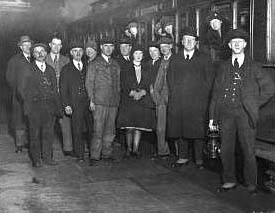 Passengers and railway staff with the last train to leave Ripon for Masham on 31st December 1930
Passengers and railway staff with the last train to leave Ripon for Masham on 31st December 1930 |
On 7th January 2006 the Harrogate Advertiser reported " Moves to create a preferred route to reopen the 11-mile rail link between Harrogate and Ripon will be made at a key meeting next month. An earlier consultant’s study has already declared that a reopened rail line would be viable. And on February 9 North Yorkshire County Council’s transport chiefs have called a meeting to report on findings for a route and site of a possible terminal in Ripon.
Five potential sites for a new railway station in Ripon were highlighted in a 100-page document by |
the consultants. The document has been funded by North Yorkshire County Council, Ripon City Partnership, Ripon Railway Reinstatement Association, Harrogate Borough Council and the Countryside Agency"
In June 2009, the line appeared on a list of potentially viable lines to be reopened presented by the Association of Train Operating Companies. However it is believed that Ripon Railway Reinstatement Association set up to campaign for the line to be rebuilt has now been wound up. Perhaps the only railway serving Ripon in the future will be the miniature railway at Newby Hall.
BRIEF HISTORY OF THE LEEDS NORTHERN RAILWAY
In 1835 George Hudson was elected to York City Council (becoming Lord Mayor in 1837). In the same year he met George Stephenson by chance in Whitby, and they became friends and business associates. He learnt of Stephenson's dream of a railway from London, using a junction of the London and Birmingham Railway at Rugby, through Derby and Leeds to Newcastle - but bypassing York!
 |
In fact, since 1833, plans had been advanced for three lines - the Midland Counties Railway from Rugby to Derby; the Birmingham & Derby Junction Railway from Henley-in-Arden (just outside Birmingham) to Derby; and the North Midland Railway from there to Leeds, which was first reached by the Leeds & Selby Railway in 1834. In 1835 George Hudson formed a committee to promote a line to be known as the York and North Midland Railway, which was incorporated in 1836. This proposed line would join the North Midland at Normanton, a few miles east of |
Leeds, and it received its Act of Parliament in 1837.
The first section of the Y&NMR opened on 20th May 1839 between York and a junction with the Selby line at Gascoigne Wood, with the remaining section to Normanton opening on 1st July 1840. A spur to Methley Junction, giving access to Leeds via a working arrangement with the North Midland, was opened on 27th July 1840, followed by a southbound curve from the L&S at Gascoigne Wood.
The L&S offered a direct route into Leeds from the east while Hudson's longer route into Leeds ran through Castleford via the Whitwood and Methley Junctions. On 9th November 1840 George Hudson arranged to lease the Leeds & Selby, and he promptly closed the line to passengers west of Milford; despite his line being four miles longer, passengers now had no choice but to use it. In 1844 an Act of Parliament was passed allowing the York & North Midland to absorb the Leeds & Selby Railway.
 |
Having completed the York line, George Hudson turned his attention to Harrogate, proposing a branch to the town via Wetherby from a junction with the Y & NM at Normanton. Local people and businesses initially opposed the railway, fearing an influx of people from Leeds and Bradford would lower the tone of the area. This opposition was overcome, and the line opened to a temporary terminus at Spofforth, and was extended into a terminus at Harrogate Brunswick on 20th July 1848.
Thirsk and Northallerton were early additions to the railway map as part of the Great North of England Railway which, as planned, would run from York to Darlington and then on to Newcastle upon Tyne. The middle section, between Croft and Darlington, was authorised by Parliament on 4th July 1837, and work started near Croft on 25th November 1837. The southern section of the line was authorised on 30th June 1837, and then work was concentrated on this section in order to join up with the Y & NMR which was already under construction, with the two companies sharing a joint station at York.
The line opened between York and Darlington to goods traffic on 4th January 1841 and to passengers on 31st March. It was at this stage that George Hudson decided to invest in the Great North of England Railway so that they |
could complete their line from Darlington to Newcastle upon Tyne. With George Stephenson he planned and carried out the extension of the line to Newcastle, and by 1844 he had control of over a thousand miles of railway. The GN of ER was purchased by the Newcastle & Darlington Junction Railway under Act of 27th July 1846 becoming the York & Newcastle Railway and, in 1847, the York Newcastle & Berwick Railway.
| The Leeds & Thirsk Railway was incorporated by Act on 21st July 1845 to serve Harrogate and to provide an alternative route from Leeds to the north east to break George Hudson's monopoly of rail transport in that area. Although the line was built in four years it was opened in stages, as the southern section of the line was more demanding of the engineer’s skills. with |
 |
five major viaducts and Bramhope Tunnel (which, when finished, was exceeded in length only by Standedge and Woodhead).
The first section of line to open was between a new terminus at Thirsk and Ripon. Initially this opened to mineral traffic only on 5th January 1848 and, after the line had passed its Board of Trade inspection, a passenger service was introduced on 1st June 1848 (although it is likely some passengers had been carried before this date). Railway companies were not averse to taking members of the public along parts of their lines as they were being built as long as the company had stock and locomotives to so do: such clandestine operations were quite common.
Intermediate stations were opened with the line at Wath (later renamed Melmerby), Baldersby and Topcliffe. At Thirsk the line passed over the YN & B to a terminus close to the centre of the town, with the YN & B station being over a mile to the west of the town.
 |
The next section to open completely was from Ripon to Weeton via Starbeck. This opened on 1st September 1848 with intermediate stations at Wormald Green, Nidd Bridge and Harrogate (renamed Starbeck in August 1857).
The final section between Weeton and Three Bridges Junction at Leeds (which included Bramhope tunnel and two of the viaducts) opened on 9th July 1849, linking up with the existing line into Leeds Central station which it shared with Leeds Dewsbury & Manchester Railway, The Great Northern Railway and the Manchester & Leeds Railway.
Under the NER’s Harrogate Branches Act of 8th August 1859 all of Harrogate’s services were brought together in one centrally sited station. This required construction of four connecting lines including a curve from Dragon Junction, east of the new Harrogate station, to Bilton Road Junction on the L&T, and from Dragon Junction to |
Starbeck. Harrogate Brunswick was closed when the new through station was opened on 1st August 1862.
The architecture for the Leeds and Thirsk is attributed to Thomas Grainger but with considerable involvement by John Bourne. The latter became resident engineer of the L&T in 1846 and sole engineer in 1852 when Grainger died in an accident on the line. The stations on the L&T were nothing of merit, and only three of them were permanent structures at its opening, namely Thirsk, Topcliffe and Starbeck. The seven others were nothing short of basic, with low platforms and simple timber shelters.
| In 1846 the L&T sought powers to extend their rails northward from a junction at Melmerby, passing under the Great North of England Railway at Northallerton and then on to Stockton-on-Tees to link up with the Stockton & Hartlepool Railway. This was opposed by the GN of ER who persuaded the L&T to apply only for the northern section of their line from |
 |
Northallerton in return for an agreement to build junctions at Thirsk and Northallerton which would allow through running between the two lines.
The first scheme for a station near the small market town of Masham in Wensleydale, was proposed by the Northern Counties Union Railway for a 127-mile line from the Leeds & Thirsk Railway at Melmerby to Leyburn, Hawes, Kirkby Stephen and Appleby and on to a junction with the Lancaster & Carlisle Railway south of Clifton At Kirkby Stephen, there would be a junction with the Stainmore line running between Bishop Auckland and Tebay. Although the company received its Act on 27th July 1846, the scheme was doomed to failure owing to unworkable clauses being inserted into the Bill at the instigation of the London & North Western Railway and Lancaster & Carlisle Railway who did not want the line to be built, and also opposition from the Duke of Cleveland who was reluctant to sell the company a vital strip of land. Despite this opposition, a total of 2 ¼ miles was completed, including a section of earthworks north of Melmerby.
In 1848 the L&T made a further attempt to extend their line northwards from Melmerby to Northallerton, and this time they were successful in receiving parliamentary approval. The partially completed earthworks to the north of Melmerby were purchased from the Northern Counties Union Railway formed part of the new route.
| At this time, a change of name to the Leeds Northern Railway seemed appropriate, and this was sanctioned by Parliament in 1851. Work began at Melmerby the same year with a junction off the Leeds Northern striking north for Northallerton and an under-line bridge on the York Newcastle & Berwick Railway as it was now called. No junction was provided with the |

|
YN&B with a low level station being built at Northallerton adjacent to the existing station. The section north of Northallerton was to be the most expensive endeavour, but is beyond the scope of this brief history.
The line from Melmerby to Northallerton was initially single track and was not doubled until 1901. The bulk of the passenger services continued along the original L&T to Thirsk Junction (as the YN & B’s station at Thirsk was now known) where it took the YN & B route to Northallerton, beyond which it branched off to the east for Stockton. Such a service even continued beyond the doubling of the line in 1901, but gradually passenger trains took the shorter route to reach Teesside. In later years this route increased in importance and was used by the Newcastle - Liverpool dining car trains and the LNER and BR Pullman trains. With trains now running onto the YN&B and on to Northallerton, Thirsk Town station closed in December 1855, although it was retained as the town's goods station until 3rd October 1966.
Melmerby station was given an extra platform to the north of the road level crossing forming a ‘V’ with the platform on the Thirsk line. The extension opened on 2nd June 1852 between Melmerby (renamed from Wath) and Northallerton Town, which was on the east side of the YN & B. Intermediate stations were provided at Newby Wiske and Sinderby (and further stations between Northallerton and Stockton). Northallerton Low Level opened in December 1854 and an additional station at Pickhill was added in March 1875.
On 1st January 1856 a spur was opened allowing services to run from the Stockton line onto the YN & B where they called at the main (high level) Northallerton station. At this time Northallerton Town was closed, but the low level station was retained as the northern terminus for local services to Melmerby.
A branch opened from Ripley Junction (between Nidd Bridge and Starbeck) to Pateley Bridge on 1st May 1862 (closed to passengers on 2nd April 1951), and a branch from Melmerby to Masham was eventually opened on 10th June 1875 (closed to passengers 1st January 1931)
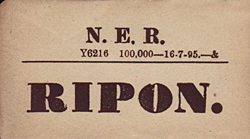 |
When the Leeds & Thirsk first opened, the Great North of England Railway was not too concerned so long as traffic from the south of England was routed via their line to the north. However once the Leeds Northern had a connection with the London & North Western Railway at Leeds, and access to the docks at Hartlepool via the Stockton route, it was clear that the |
two lines would be competing for traffic. Initially the YN&B slashed fares, but it was soon clear that amalgamation seemed the best option. This followed on 31st July 1854, when the Leeds Northern, York & North Midland and the York Newcastle & Berwick amalgamated to form the North Eastern Railway, the fourth largest of the pre-1922 grouping companies.
Northallerton Low Level station finally closed on 10th February 1901 when a new link, the Cordio Loop from Cordio Junction on the Leeds Northern to South Junction on the old YN&B, was opened on the same day to allow trains from the Sinderby line to run into the main station. A second, the Longlands Loop, running from Longlands Junction on the YN&B, under the Cordio Loop to Boroughbridge Road Junction on the Leeds Northern opened only for down (northbound) traffic on that day.
 |
In July 1922, Bradshaw's Railway Guide shows 14 down trains and 13 up trains calling on weekdays at Ripon, the principal station on the line, with three on Sundays; however these did not stop at all stations. Baldersby had three down and five up trains, with two on Sunday. Sinderby had 3 up trains and three down trains with no Sunday service. Pickhill had a limited service on certain days of the week.
During WW2 the War Office considered Northallerton to be a |
'vulnerable point', with its strategically important junctions between the former Leeds Northern (although part of the NER since 1854 the line was often still referred to as the ‘Leeds Northern’ until closure) and the main line. If one of the under-line bridges was destroyed during an air attack it could block all north - south traffic through the town. To safeguard against this, an emergency connection between the two lines was authorised on 28th November 1940.
| Construction of the 'Avoiding Line', as it was known, started in January 1941. The line was 960 yards in length running from a point just north of Romanby Gates level crossing on the Leeds Northern, passing under the Hawes branch on a very low temporary bridge with a headroom of only 4'6" (this would have been quickly demolished if the avoiding line had to be |
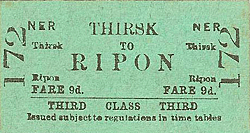 |
used) to a junction with the main line at Castle Mills. The new line was available for use from 23rd June 1941, but it was never used.
At the same time, emergency platforms were built immediately south of Romanby Gates level crossing. These would have been used if Northallerton station was damaged during an air attack. The avoiding line was lifted by the end of 1947, but the emergency platforms remained at least until the 1960s for use by trains bound for Teesside during engineering works on the East Coast main line.
 |
The old Leeds Northern survived until nationalisation with the exception of Newby Wiske station which was closed as an economy measure in both wars, finally closing on 11th September 1939. After WW2 both passenger and freight traffic was in decline and Bradshaw's October 1951 Railway Guide shows 13 down trains and 11 up trains calling at Ripon with five |
on Sundays. Baldersby had three down trains and four up trains, with two on Sunday, while Sinderby had two down trains and one up train, and no Sunday service.
It was soon clear that the service could not be maintained. Pickhill, Baldersby and Topcliffe closed on 14th September 1959, and the line from Melmerby to Thirsk closed completely and was lifted. Nidd Bridge Wormald Green and Sinderby closed on 18th June 1962, but all remained open for goods traffic - Sinderby until November 1963 and the other two until August 1964. This left a reduced service between Harrogate and Northallerton calling at Ripon and Melmerby. This was finally withdrawn on 6th March 1967 as part of the Beeching cuts, when Melmerby closed completely. At closure, Ripon station was still quite busy with 19 daily departures and 6 on Sundays.
 |
North of Ripon, a daily freight working shunted the yard at Ripon then worked on to Melmerby, where there was an MoD ordnance depot. This closed at the end of 1968 with the last freight working on 3rd October 1968 with the final trip along that stretch of line on 31st December to collect the last wagons. Ripon station remained open for goods traffic arriving |
from the south until 5th September 1969, with a private siding remaining in use after that date.
The story has a twist in that shortly after closure a serious accident took place just south of Thirsk on 31st July 1967. This closed all but the up slow line on the ECML, and the resulting chaos can easily be imagined. The situation was made no better when attempts to operate the slow line as a dual direction line under a pilot proved to be chaotic. A radical solution was to reopen the Leeds Northern route from Harrogate to Northallerton for northbound trains only, (southbound trains continued on the slow line). As signal boxes had been shut and battery boxes removed, no interlock detectors could be operated, and the first priority was to replace batteries. On the same day as the accident, a train had been sent from Darlington with the required batteries and pilot man and all nine signal boxes and cabins were reinstated. Men were found to operate them on 12-hour shifts until the emergency passed on 2nd August.
| For all too brief a time, the line had proved its value as an emergency route, and voices were raised in a vain endeavour to keep it open. However, serious accidents on the ECML were so few that it would have been folly, in terms of maintenance alone, to keep the route. So once again the batteries were removed and the signalling also. The condemnation of the road |
 |
bridge at Sinderby may have been a management move to ensure that the line could never reopen. In 1968 the bridge was filled without even removing the track. The Leeds Northern track was lifted in 1970.
Today the southern section of the old Leeds Northern between Leeds and Harrogate is still open, although it now follows a former branch line to York instead of continuing through Ripon to Northallerton. In recent years a feasibility study has been undertaken into the possibility of reopening the line between Harrogate and Northallerton. There has been a large amount of public support for the scheme. The northern section of the Leeds Northern between Northallerton and Stockton also remains open although all intermediate stations have closed with the exception of Yarm (reopened on a new site) and Eaglescliffe.
Click here to see photographs of a journey between Harrogate and Northallerton on 4th March 1967, the last day of public service.
Tickets from Michael Stewart, route map and timetable from Alan Young
Sources:
To see other stations on the Leeds Northern Railway click on the station name: Northallerton Low Level, Newby Wiske, Pickhill, Sinderby, Melmerby, Wormald Green, Nidd Bridge, Baldersby, Topcliffe, Thirsk Town & Thirsk (Junction)
See also the Masham branch: Masham & Tanfield |

old24.jpg)

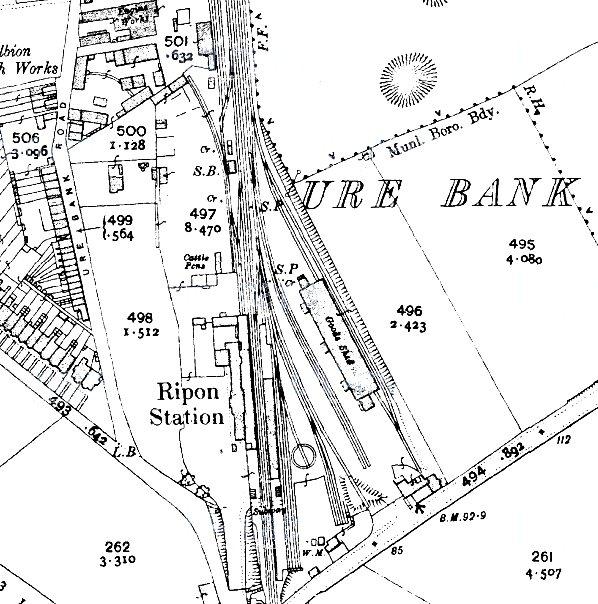
old10.jpg)
old21.jpg)
old22.jpg)
old18.jpg)
old5.jpg)
15.jpg)
17.jpg)
8.jpg)
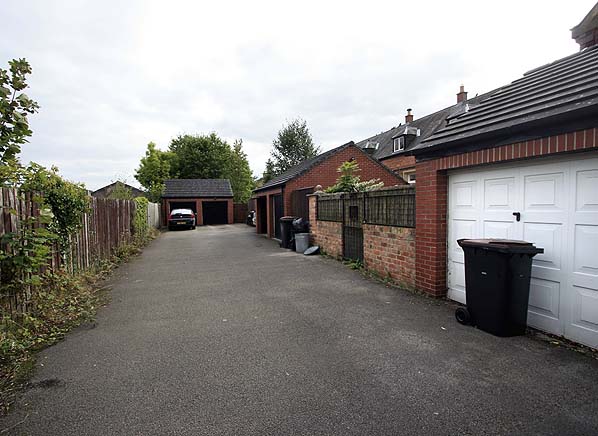











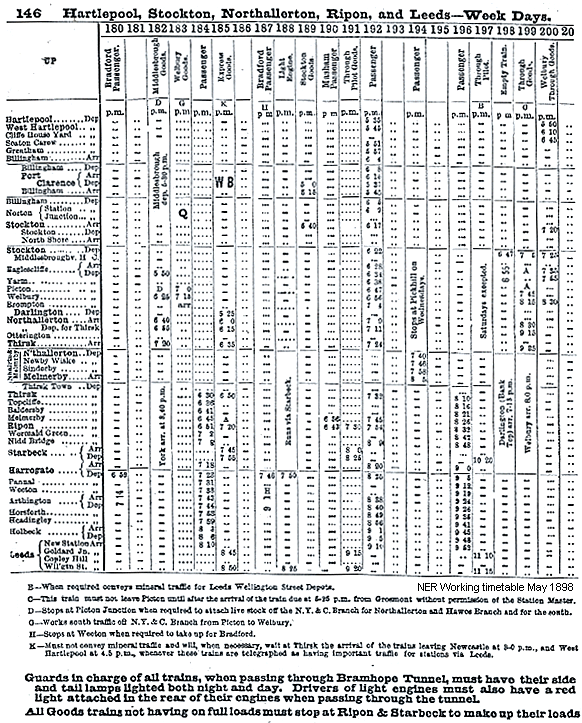







 Home Page
Home Page